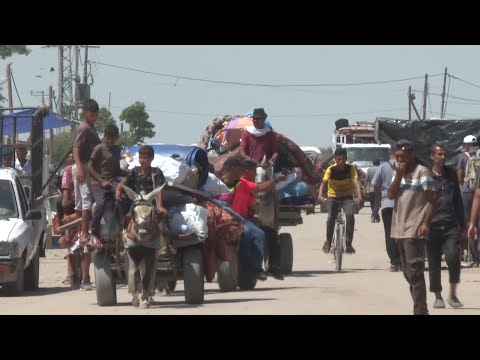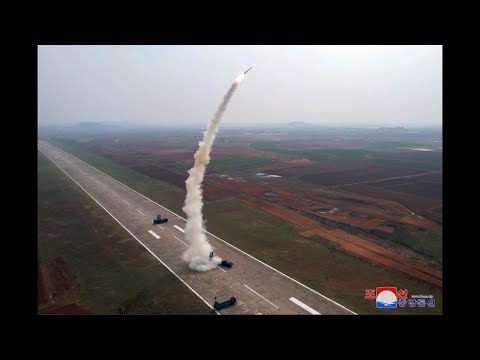(30 Jun 2024)
RESTRICTIONS SUMMARY:
ASSOCIATED PRESS
Khan Younis, Gaza Strip – 30 June 2024
1. Various of people carrying belongings as they seek safe shelter
2. SOUNDBITE (Arabic) Mohammad Hajjaj, displaced resident from Shejaiya:
"We have been displaced more than once. This is the fourth time we have been displaced from one area to another. They tell us (the Israeli military) that it is safe area, but it turned out it isn’t. Two days ago, suddenly, the tank started shooting at us, and they said that the tank was at the entrance to the Eqlimi (area). People fled and left their children and their luggage. We slept in the streets, and we were made homeless."
3. Various of people collecting their belongings to evacuate
4. SOUNDBITE (Arabic) Mervette Shamlakh, displaced resident from Gaza City:
"We came here to the Mawasi in Khan Younis. They told us it was safe, but there is no safety. We are leaving, collecting our things to leave. We have no idea where we are supposed to go. There are no more safe places.”
5. Various of people carrying their belongings on donkey carts and evacuating
6. SOUNDBITE (Arabic) Akram Ashour, displaced resident from Khan Younis:
"We appeal to people who have a living heart, and to all the Arab countries, to stand with us. It is enough for us. We have been killed. This is the fourth or fifth time we have been displaced. Where can we go?"
7. Various of people collecting their luggage before evacuation
8. Various of tents, people collecting their luggage to evacuate
STORYLINE:
More Palestinians on Sunday fled what was once a designated safe area in the Gaza Strip as Israel’s military continued its operation in the southern city of Rafah.
Even those at the furthest point of the area packed whatever belongings they had and fled deeper into the neighboring city of Khan Younis.
Since earlier this week, large groups of people have been leaving, with their tents, mattresses, and clothes packed on the back of trucks or small donkey-pulled carts.
Many walked on foot as they tried to find a safe place to shelter.
For many Palestinians in the war-torn enclave, it is not their first displacement, but it is getting more difficult by the day.
Mohammad Hajjaj told The Associated Press he was first displaced from the central neighborhood of Shejaiya in the early weeks of the war.
Hajjaj said that two days ago, he and his family woke up to the sound of Israeli tank fire nearby before leaving.
“We slept on the streets and we were made homeless,” he said.
The fleeing Palestinians found space on a plot of land in Khan Younis and began setting up their tents again.
Mervette Shamlakh said she had come to Khan Younis from Mawasi, referring to a sandy area with no water or sewage systems, declared a safe “humanitarian zone” by Israel early on in the war.
“It’s the same thing again and we had to flee… we have no idea where we are supposed to go. There are no more safe places,” Shamlakh added.
Israel has said that its operation in Rafah will mark a major turning point in its war against the Palestinian militant group Hamas.
However, it has been surprised by the re-emergence of Hamas and other Palestinian armed factions in northern and central Gaza neighborhoods, months after bombarding those areas.
With Israel’s war against Hamas now in its ninth month, international criticism is growing over the campaign of widespread destruction in Gaza, at a huge cost in civilian lives.
The top United Nations court has concluded there is a “plausible risk of genocide” in Gaza — a charge Israel strongly denies.
Find out more about AP Archive: http://www.aparchive.com/HowWeWork
Twitter: https://twitter.com/AP_Archive
Facebook: https://www.facebook.com/APArchives
Instagram: https://www.instagram.com/APNews/
You can license this story through AP Archive: http://www.aparchive.com/metadata/youtube/0097fbd5a07d40d98b23415a1b14e470
Author: AP Archive
Go to Source
News post in July 5, 2024, 6:04 pm.
Visit Our Sponsor’s:
News Post In – News





